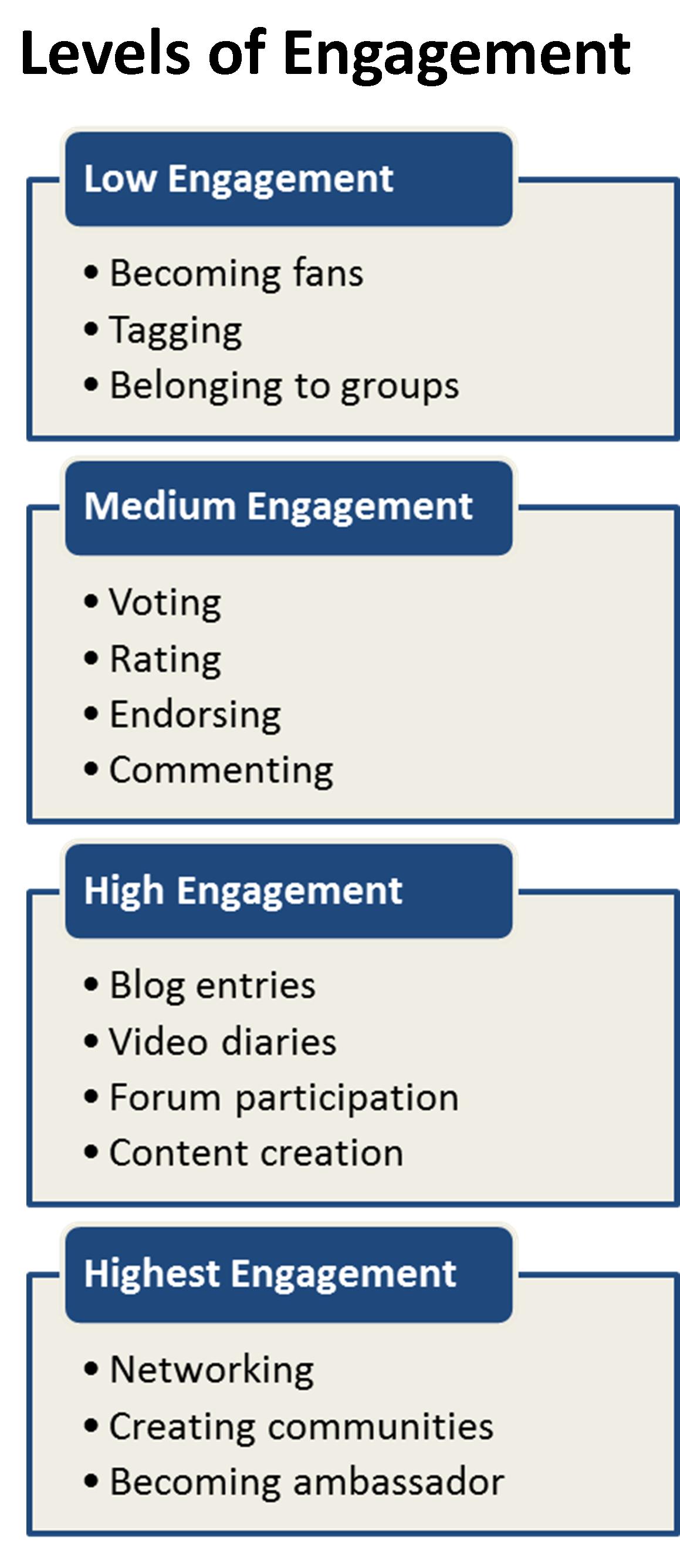
Customer Engagement can be achieved by utilizing online conversation to reach customers without even talking to them. You can take advantage by providing meaningful and relevant information through whichever technology and online locations preferred by your customer be it mobile, sms, chat, social media and so on. I believe that customer engagement is an integral part of marketing, especially complimenting to traditional approaches like billboards, ads and email.
For me customer engagement is the making of a long term relationship between your brand and your customer, by constant flow of two way communications. In other words, it’s the actions you take for making a customer believe in your product/service; moving away from the transaction based approach to focus on building long term loyalty.
Some points to ponder:
Engagement affects loyalty, sales & profits
Many people I know say that customer relationships are either very or extremely important to the success of their business. More customer engagement, translates into improved customer loyalty, increased revenue and a healthy bottom line.
Engaged customers offer valuable benefits
It is a known fact that engaged happy customers often refer products and services to others. Engaged customers are more likely to have repeat purchases. As they feel associated with the brand they are more likely to provide feedback. Engagement over a period of time cultivates loyalty, this means you have a section of your customer base how are not too price sensitive.
Lack of customer engagement means lost sales
Research shows that insufficient customer engagement accounts for up to 25% of lost sales each year. This also depends upon the industry and the brand.
Technology provides important tools for engagement
The ever changing nature of technology provides some important tools for creating customer engagement. I say that in the next 5 years customer engagement will be driven by new and interesting technologies. Those who are used to working with new channels and technologies will fare much better over the next 10 years. .
Measurement is a challenge in engagement initiatives
Only few companies have mastered how to effectively measure for creating customer engagement. The most significant barrier is the measurement piece.
Engagement in a B2B Space
All this clever engagement stuff is great for selling music to teens, increasing TRPs for reality shows, but how does it relate to the more mundane world of business-to-business sales/marketing? My experience shows that the marketers managing popular reality TV shows do this engagement piece really well. So let’s see how we can use some of their techniques which channel marketers or distributors can take advantage of. Here are a few lessons:
Identify and use communications platforms your customers use
Teenagers love text messaging, so reality TV shows use this. Knowing the way customers prefer to be reached is a good start on becoming relevant and accessible to them. Is email the most effective medium? Fax? Text message? Are customers viewing information on devices that show images? If so, can photos and illustrations enhance outreach?
Reach out to customers frequently, in multiple ways
The reality shows touches audiences in its once or twice-weekly nightly broadcasts, with “behind the scenes” videos and with message boards fans update themselves around the clock. Providing customers numerous opportunities to connect and interact boosts the odds of being reachable when needed.
Follow the conversation
Viewers become fans of reality shows, they vote, discuss, and follow their favourite contestants. They use variety of means to talk about them, both online and offline. Brand managers should scan blogs and community forums, to learn what’s being said about their brand. The whole sharing of opinions has gone digital, and there’s a good chance that customers somewhere are sharing opinions on your company or product. Knowing what’s being said can be an enlightening “reality check.” A response plan is warranted if discussion isn’t favourable.
Join in, and facilitate, conversation
After assessing the drift of online discussion, and deciding on communication purposes for the brand, become involved and start implanting messages into the dialogue. Select few employers or long-time customers as “brand ambassadors”. Have them comment on blogs that contain misstatements or confusion and join in forum dialogues. The idea is to have the ambassador set the record straight (if required), but also ask follow-up questions, offer to provide additional information and freely supply contact information for use with future inquiries. If one does not exist, consider forming online forums/blog, with a public comment area, to enable conversation between the customers and the “brand”, and among customers themselves. This offers a wealth of information that can be used to inform brand messaging. Even complaints can offer valuable lessons.
Explore social technologies
There are several online communities (like MySpace, Facebook) where viewers and fans of the reality TV swap messages, photos, videos and music recommendations. You cant literally translate this to the B2B space, but other social communities are. LinkedIn, a social network designed for business professionals, has focused interest groups for a wide variety of professional disciplines, such as operations management, mining, FMCG and a variety of financial services. Conversations on this platform cover best practices, vendor and product referrals and industry trends. This is known for a while that for many industries and market segments, LinkedIn is a good listening post and a promising platform for discussion. Facebook, another social network, which began as a bastion of college and high school students, is also attracting a growing number of young and old professionals.
Applying these lessons will make your B2B brand more accessible, relevant and responsive to your customers.
Chintan is the Founder and Editor of Loyalty & Customers.






How about throwing in what is called a mobile loyalty program mloyal?
The power of the handheld device and the opportunities it presents cannot be undermined. Businesses can acquire, retain and engage their customers using the ever-expanding mobile user base.
In fact I would propose online and mobile related customer engagement programs must go hand-in-hand in today’s times when competition is the biggest challenge.
Happy to contribute here. Thanks!
James O